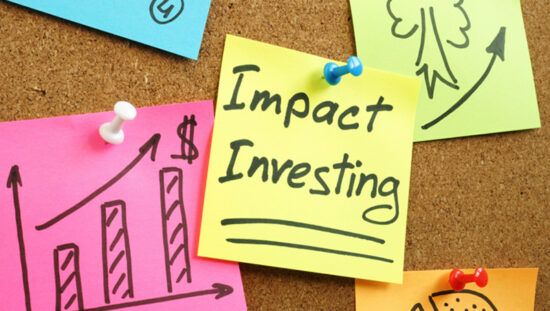BlueBay Asset Management’s My-Linh Ngo, head of ESG, shares why the firm has recently restated its commitment to ESG and set six goals for the rest of 2020.
These are:
- Enhancing investment choice
- Refreshing ESG investment-related policies
- Embedding ESG into credit research
- Developing ESG tools to enhance investment team support
- Strengthen ESG IT data infrastructure
- Embrace wider industry collaborations and engagement
Here, Ngo answers ESG Clarity’s questions on its new commitments:
What was the rationale behind coming up with the six ESG goals for the rest of 2020?
The 2020 work programme includes one or two activities we have carried over from 2019. Others are additional measures on a continuing theme, for instance the work on our ESG investment data infrastructure to facilitate our ESG integrated efforts, as well as efforts to expand our investment offerings to respond to investor demand for more ESG-orientated funds.
What do you think you have achieved so far as a firm from an ESG perspective?
That’s a good question, which can have two slightly different possible answers depending on which way you look at it. Both are positive but one more so than the other.
There’s the answer from the perspective of BlueBay and its journey since 2013 to the present day, which would be that we have achieved a lot in terms of building up our ESG investment resourcing capacity (people and information), to ESG integration in terms of processes and accountability, and also in terms of mindsets and thought leadership.
Then there’s the angle of how we are doing compared with the wider market, and here I’d say we are making good progress, but there is more to do: we need to evidence more concretely and consistently how ESG considerations are being incorporated into our portfolio construction, and we need to expand the offerings for investors looking to go beyond ‘ESG aware’ strategies to ‘ESG orientated’ ones which enable them to have more positive impact.
See also: – ESG integration in bonds ‘requires different strategy’ to equities
Which gaps do you intend to fill by enhancing the group’s investment choice?
Our main investor client is institutional in nature, and these have traditionally tended to take a more conservative and pragmatic approach to ESG considerations, preferring ‘ESG aware’ strategies where ESG factors are integrated and evaluated for their investment relevance and materiality. But beyond that, ESG considerations would not override financial considerations. Our conventional funds offer this as standard.
However, what we are seeing within the last couple of years, is a growing proportion of this market, seeking more ‘ESG-orientated’ strategies where the initial starting point is ethical or sustainability considerations, and these define the initial investment universe from which our portfolio managers select investments. The core focus of our existing ESG orientated funds have a ‘responsibility’ focus, but again we are seeing growing demand for more thematic or impact focused funds. We want to build our range for both these types of approaches across the suite of fixed income sub-strategies.
Beyond the institutional market, BlueBay is also keen to expand in the wholesale market, and here there has been long-standard demand for ESG orientated funds, but where historically there have been limited range of ESG fixed income offerings.
Where do you see areas for improvement in your ESG investment related practices?
Incorporation of ESG is a journey that is never ending – you can have a robust and embedded process in place – but there is always more to do to strengthen it!
To-date, we have worked on ensuring we have access to useful ESG information, and on understanding how our investment process and teams work, and ultimately on how ESG dynamics play out in the fixed income setting. In doing this, we’ve come to the view that we needed to create an ESG integration framework that incorporates ESG as both a source of risk and alpha – and reflects how ESG investment maternity plays out for fixed income investors – as well as a process which promote accountability and ownership of our investment teams.
We are now implementing this firm-wide, so it becomes a natural part of our investment process rather than an add-on. This means also integrating ESG within the investment process workflow and systems to make it as easy as possible for our analysts and portfolio managers to access and use ESG insights.
We also recognise we need to build out our ESG investment reporting capabilities for internal and external purpose so we can monitor our exposure and act accordingly.
What kind of ESG tools are you looking at?
This category is about finding ways to better leverage off ESG data and transforming it into information which enables our investment teams to act on those insights in their investment decisions and communicate this to our clients. This includes developing ways to build ESG awareness, knowledge and understanding of our investment professionals to enable them to effectively incorporate ESG into what they do.
We are currently reviewing what products and resources are useful for us to better understand risks such as carbon, or that evidence positive impact, such as UN SDG alignment; as well as looking to design proprietary tools to capture ESG engagement activities. This is a relatively new market in terms of the focus of the analysis, so there are data and methodological challenges in some instances. We are finding there is a shortage of commercially available tools which are particularly suited to the fixed income assessment class – for instance – enabling us to report on the ESG characteristics of our sovereign portfolios.
How important is ESG data to you and your clients?
It’s critical in that it provides the basis for how you understand your exposure and so how you work to address this. If you cannot measure and monitor, you cannot effectively prioritise and manage. Now the challenge is knowing what data or information is useful (which is linked to the purpose for wanting that data in the first place), how you can get that, and understanding the quality of that data.
We try to consider ESG risk exposure as a starting point and do this by filtering this at different levels – this means looking at ESG risks not just at the company, but also at the sector/geographical, issue, and portfolio level. Each of these filters can have different risk presentations, but combined, will provide a more holistic understanding and means we can avoid blind spots. We then build on this to understand if there are any alpha opportunities stemming from those risks we can act on.
Which industry collaborations or engagements do you anticipate getting involved with?
It has been a conscious decision of ours to not get involved in too many external initiatives early on, but instead focus our energy and resources on building internal ESG capacity and processes to get them on a good footing, and then consider what exists in the market and whether we get involved. We need to align our internal ESG commitments and capacity with the external ones to ensure we can play an active role and leverage that experience to enhance our internal ESG capabilities and add value to investment performance. What we’re not prepared to do is simply be a signatory on something and then that’s it – it’s not a tick box exercise.
That’s played out in those initiatives we have signed up to, which have ranged from those seeking to address investment industry ESG practices in fixed income (such as those our involvement in the various PRI working groups), to sector/issue level (more recently our involvement in the Brazilian government engagement on deforestation risks) as well as company level engagement efforts.
Going forward we anticipate greater involvement in climate related collaborations – indeed this year we have already signed up to Climate Action 100+, the Transition Pathway Initiative and become an investor supporter of the TCFD disclosure framework on climate change. Another area we will be more focussed on is ESG fixed income efforts as this is where we can use our expertise and creativity to explore innovative ESG solutions, building on both our corporate and sovereign investment presence.
See also: – How regulation can level the ESG playing field
How would you like to see the industry progress from an ESG perspective?
To-date the uptake of ESG in investments has largely been left to the market to determine, but now what you are seeing is the role of regulation in institutionalising ESG within the investment industry. It’s important we get the right type of regulation and that market participants themselves act proactively to recognise the need to ensure good practice, and play our part in providing innovative investment solutions that meet investors’ and societal needs.
Three areas I’d like to see shifts in would be along the lines of:
- Recognition that there is a spectrum of approaches to ESG but an ESG-aware approach should be standard – there is no one definition of what makes a strategy ‘ESG’. Investors all have different ESG priorities and requirements and one preference is not necessarily more valid than another. But clearly ‘ESG aware’ investment practice should be the base minimum – understanding the range of impacts investment decisions have on society beyond the narrow lens of financial metrics, and incorporating a broader definition of impact/return, and time horizon for evaluating that performance.
- Quality not quantity when it comes to ESG data and tools – this is really becoming more of an issue as ESG interest has grown. Whilst it is true in some instances there is a need for more data, overall the biggest issue is having the right type of data or tools which will be investment decision useful. We should also recognise data is only a starting point, not the end point for ESG, and that action can occur in the absence of delimitative information.
- Disclosure, disclosure, disclosure – investors like ourselves need to be transparent about our approach to ESG to help clients navigate the space and understand which managers best meet their ESG needs. We need to build confidence in the ESG market to avoid allegations of ‘green’ or ‘rainbow’ – washing. This is where I think regulation can be most helpful in establishing a level playing field.
Where do you see the firm in five years’ time from an ESG perspective?
That’s a difficult question to answer as the space is so fast moving that it’s hard to have visibility over the next year let alone the next three or five years!
Whilst the build-out of ESG at BlueBay has been gradual in the first five years (from 2013-2018), the pace has and will continue to accelerate over the next five. Within the last couple of years, we have reached a tipping point that it is only going one way – further embedding of ESG into what we do as a firm.
BlueBay has a long history of innovation in the active fixed income space and it has been natural that we bring this to what we do on ESG. Our specialist focus on this asset class, and creative thinking means that we should see us maintain our standing as the manager of choice for high performing and innovative ESG investment solutions. I would expect you will see a broader suite of ‘ESG orientated’ funds in addition to the ‘ESG aware’ ones.
What will be interesting to see is the extent to which ESG is embedded such that that there is not a separate ESG analysis or engagement as such, and how the role of ESG investment specialists will evolve along with the roles of investment professionals. I expect the two to come together more and more, but ultimate see the ongoing need for dedicated ESG in-house expertise as they will continue to bring a different perspective to investment which add value.








